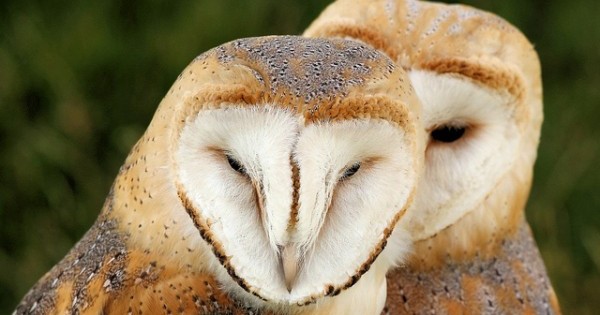
Barn owls shriek to defend their turf, to warn of danger, and to flaunt it while they got it. Not to be outdone, their offspring shriek to be fed. And as researchers are learning, just how often baby barn owls shriek, and for how long, depends quite a bit on how hungry their fellow nestlings are.
Baby barn owls share their nests with anywhere from zero to eight siblings. Every time a parent returns to the nest carrying a mouse or vole, only a single offspring is fed. This adds an element of competition to the nightly feedings: for any given meal, you’d better put your shrieks into overdrive—the screechiest owlet tends to get rewarded—or you’ll lose out.
But a fair number of vocalizations occur even when parents are away from their nests. Why? The owlets appear to be signaling to each other, in advance of a parent’s return, just how much they intend to try for the food on the next go-around. “I’m all in,” long, frequent calls seem to say, “so you might as well not even try.”
It’s a rather brilliant strategy. If the owlets can work out among themselves who is likeliest to be fed next, then those least likely to profit from their labor—begging, it seems, ain’t easy—can conserve their energy until their odds of ending up with dinner are better. To this end, researchers have found that owlets in larger broods tend to vocalize less than those in smaller broods, and that at any time, a particularly zealous vocalizer has a quieting effect on its siblings.
A recent study further investigates how owlets gauge their chances of winning dinner. A trio of Swiss researchers, Charlène Ruppli, Amélie Dreiss, and Alexandre Roulin, temporarily bird-napped 121 young barn owls from their nest boxes in the wild. Each owlet then listened to call sequences recorded from other hungry baby barn owls. These sequences varied in terms of the number of calls per minute, and the number of individual owlets who contributed to the sequence. The researchers wondered: Would the young owls in the study simply respond to the overall rate of the calls, or might they actually be sensitive to the changing number of competitors they have over time? The answer, it seems, is both: the nestlings were sensitive to both the intensity of their competition and the number of competitors they had, producing fewer, shorter calls when the competition was steepest.
At just 20 days old, then, barn owls possess a rudimentary understanding of numbers: the ability to distinguish between one and two, and two and four. Though many other species (including human infants) share the capability, it is nonetheless important to document it in owlets so young—just as we often turn to language for clues to how humans understand the world, observing how animals communicate (in addition to being interesting for its own sake) can provide useful insights into their abilities in other domains. Some researchers have measured, for instance, how long it takes a scout ant to direct foragers toward a food source in a maze; they’ve used their findings to argue that ants can engage in simple arithmetic.

